Offshore oil drilling platforms for drilling oil from sea floor
Introduction
An exploratory drilling is not a short process. Sometimes it takes months, squandering around for finding the right place to drill. Setting up a platform at every prospective drilling site is not an advisable option as there is huge investment in doing so and the probability that the prospective site would borne desired fruits cannot be determined. According to a famous offshore drilling news magazine, Offshore magazine, it takes $180 to $190 million to set up even the most basic and simple platform.
For this reason, the best option to avoid such risks is to use mobile drilling platforms as they can be easily shifted to a new site whenever the need arises.Mobile drilling platforms is the most viable option till the time a prosperous site is found. Let’s take a look at the different types of mobile drilling platforms that can be used by the petroleum companies.
1)Drilling barges
It is as simple as it sounds. A barge with drilling facilities that can be towed or has its own propulsion system. It is a simple structure and is used is areas where the weather and waters are not rough. When exploratory drill is going on, the barge is affixed with the help of anchors. As there are no solid measures to make the barge completely stationary, they are used for calm waters.
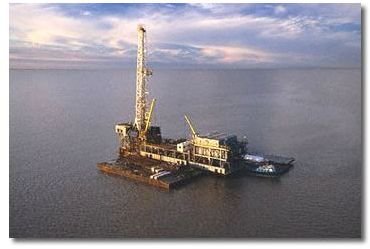
2)Jack up drill
Generally used for waters with less depth. The whole arrangement is almost same as the drilling barge. The only difference is that the jack up rigs has four huge legs which are lowered in water till they reach the ocean floor. Once the legs reach the ocean bed, the platform is lifted above the water level. The legs give firm support to the platform and also prevents the platform from getting affected by rough waters and winds.
The only drawback of these rigs is that they cannot be used in deep waters as it is virtually impossible to make a platform with such long legs.

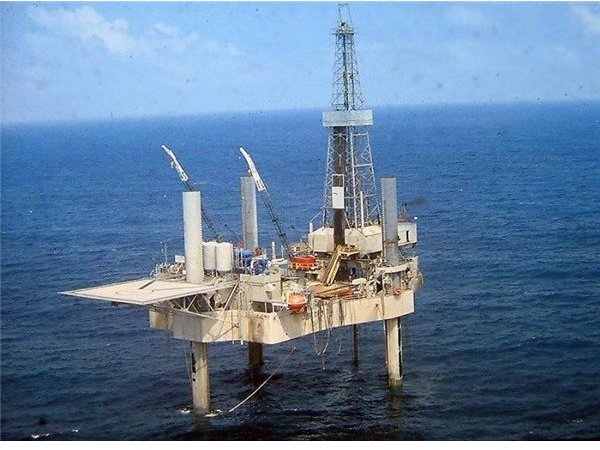
3)Submersible rigs
As the name suggests, these rigs get submerged in water. The drilling platform rests on large hollow barges which can be filled with water. When the rig reaches the drilling site, the hollow barges are filled with water and then anchored. The platform rests on the surface of water. When the rig has to be moved, the water in the barges is pumped out with and when the barges surface, they are towed to the next site. They have the same drawback as the jack up drill, i.e they can only be used in shallow waters.
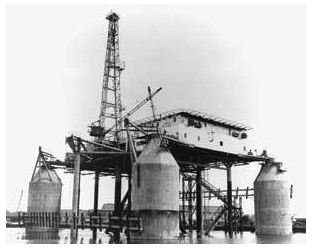
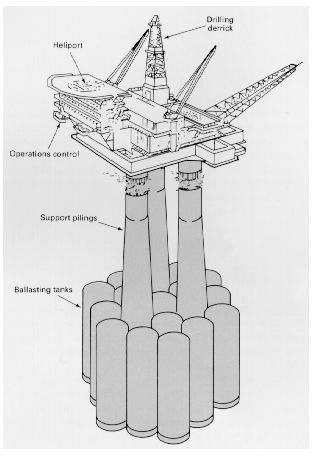
4)Semisubmersible rigs
They are made so as to work in deep waters. The construction is similar to submersible rigs. But unlike submersible rigs the barges are not filled till the platform touches the water. Instead the barges are filled only upto an operating height and then the anchors are lowered to provide stability.
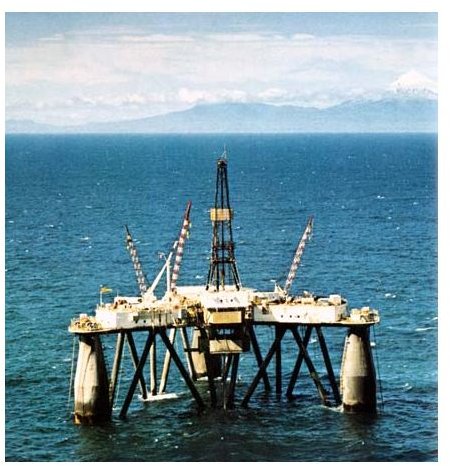
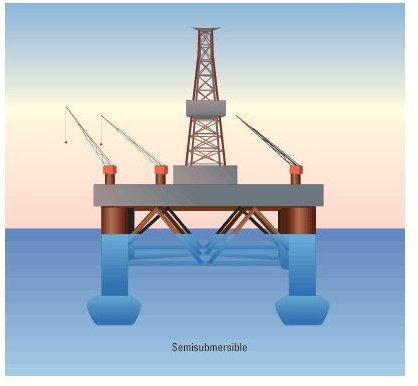
5)Drill ships
This is the most widely used drilling method that is used throughout the world. The drill ships are ocean going vessels with drilling equipments, generally at the centre of the ship. They can drill even at greater depths of oceans. When the ship reaches the drilling site, the drill is lowered through the moon hole of the ship, into the ocean. The ships use dynamically positioning system to align themselves with the drill site.

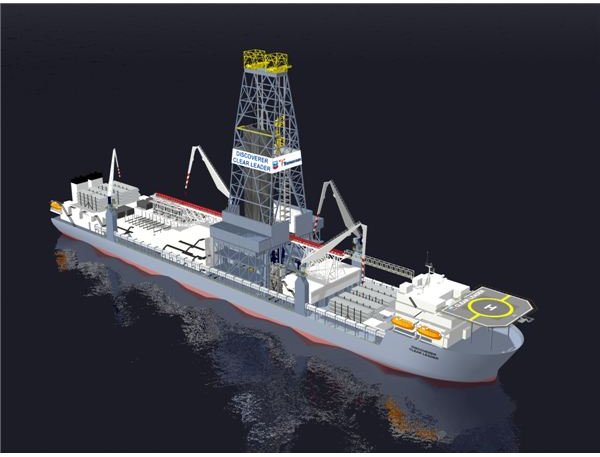
Image Credits
https://k43.pbase.com/u26/character/large/44108022.FlyingOffshore80s01.jpg
https://www.offshore-technology.com/projects/vixen/images/vixen1.jpg
https://www.io.com/~tcm/images/TWNOTE3.GIF
https://images.pennnet.com/articles/os/cap/cap_0709offmodern03.jpg
https://www.glossary.oilfield.slb.com/files/OGL05028.gif
https://www.teara.govt.nz/NR/rdonlyres/21521756-FB75-4453-B2B2-E6C2CE2D1BA5/132900/p8931pc.jpg
https://www.acrigs.com/Nautilus-Dry-Tow.jpg
https://www.manbw.com/files/news/filesof8161/Transocean%20Clear%20Leader01.jpg
